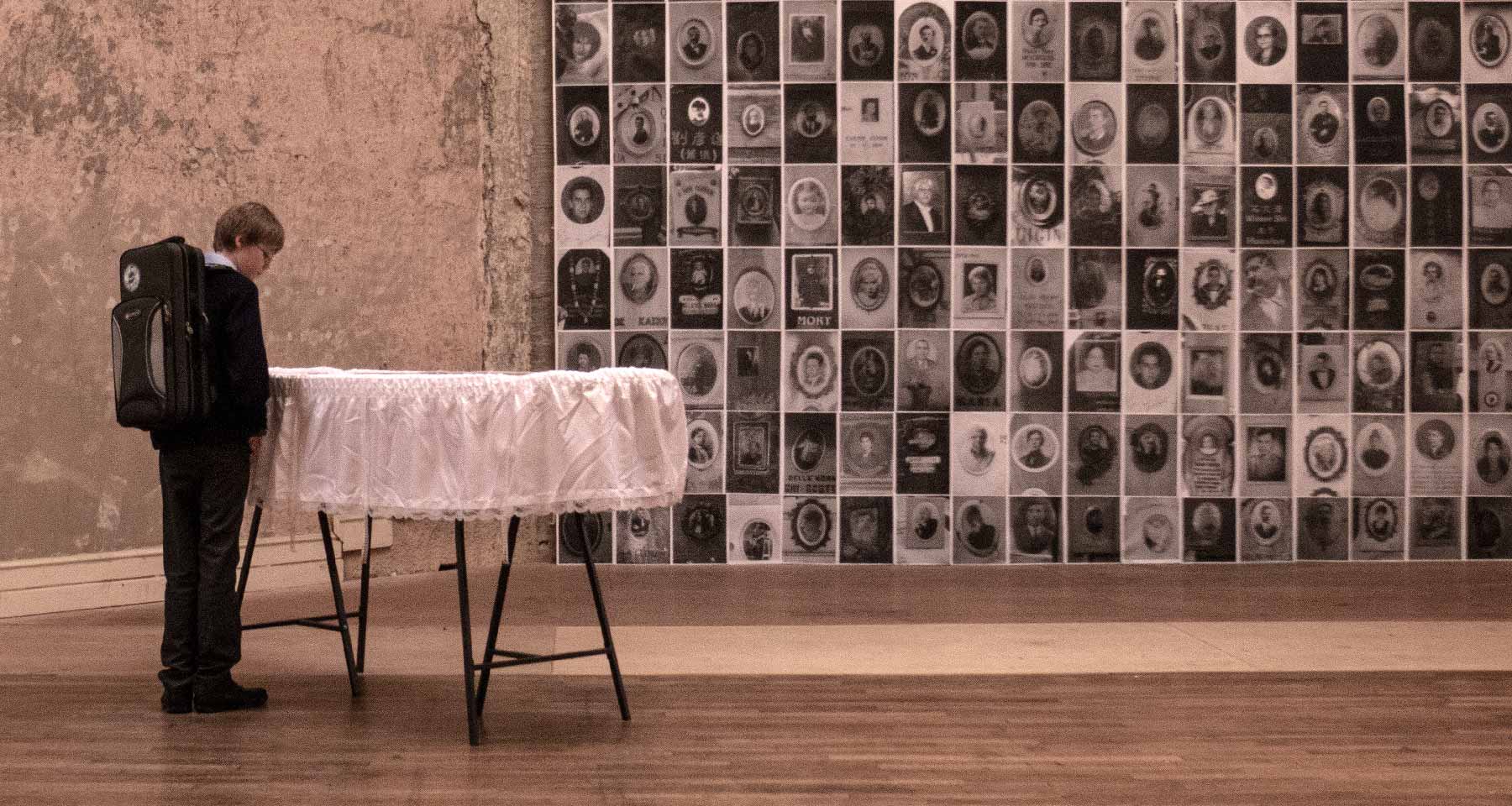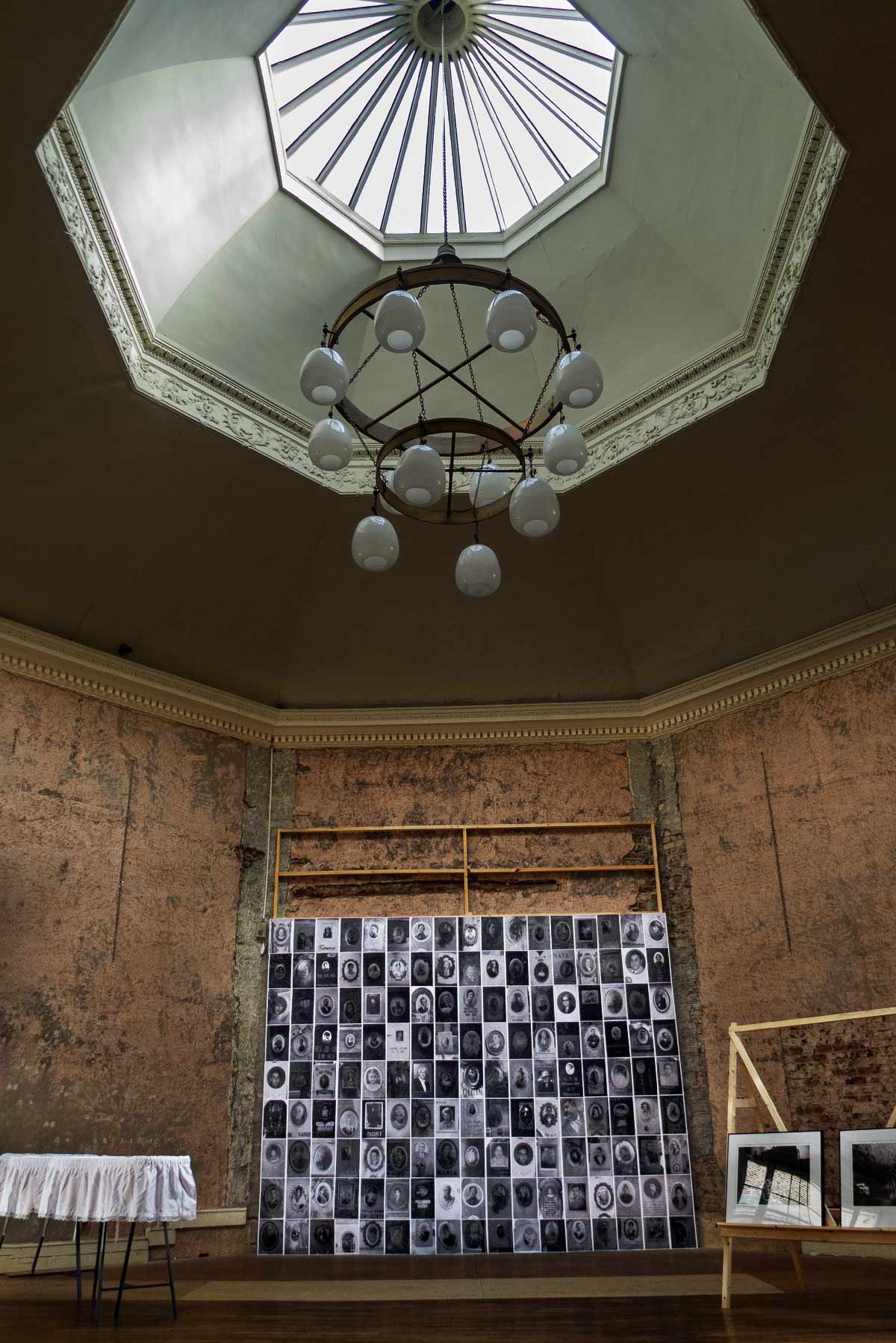
KI – Hasht-Bihisht
Irish Georgian Society, Dublin
.
Death becomes the Octagonal Room at the Irish Georgian Society in Dublin, where Koimeterion I, a photography exhibition, and Hasht Bihisht, a site-specific installation, are resting together.
Symbolism is at stake, on all levels of the overall narrative of Alejandro Gómez de Tuddo’s November 2015 project displayed in the first purpose-built public art gallery in Britain and Ireland, and possibly in Northern Europe. The choice of location and timing for the project is such that a vortex of cosmogonical renewals is being generated.
A strictly octagonal space brings together the narrative of 24 contemporary photographies of Irish and Mexican graveyards with an installation comprised of a panel made up of 156 black and white funerary portraits, and of 8 black goldfish swimming in a white coffin.
Artistic expression is also allowed its full voice through the choice of the time of the project, elected for its closeness to Samhain, a time when the ‘doorways’ to the Otherworld opened, allowing supernatural beings and the souls of the dead to come into our world.
The room is octagonal, and everything is a multiple of eight: 8 fish, 24 photographs, 4 panels of 32 tombstone portraits merging into a cross, made up of other faces, and the room is lit up centrally by a large octagonal candelabra also based on the number eight. This activates a Vitruvian-type reading mode whereby octagonality reigns. This is more than a geometrical statement. Ancient thinkers had long invested the circle and the square with symbolic powers. The circle represented the cosmic and the divine; the square, the earthly and the secular. The octagon represented totality. Anyone proposing that anything could be made to fit inside both shapes was making a metaphysical proposition: in the same way that Da Vinci’s Vitruvian man was not just designed according to the principles that governed the world – it was the world, in miniature, it was the theory of the microcosm – Alejandro Gómez de Tuddo’s project places us inside the vortex, at the heart of the motor of the microcosm, where everything becomes its own threshold, the be-all and end-all of which is an ongoing movement of regeneration.
In architecture Hasht-Bihisht (= Eight Paradises in Persian) refers to a specific type of floorplan common in Persian architecture whereby the plan is divided into 8 chambers surrounding a central room. The eight divisions and frequent octagonal forms of such structures represent the eight levels of paradise for Muslims, at the heart of which 8 fish usually rest.
This room-size visual columbarium of black and white funerary portraits from all over the world provides a strong sense of immortality as all these faces morph into one, thus acknowledging the universality of death. Furthermore, this wall of faces serenades both pereniality through their gaze into immobile eternity, as well as ephemerality, as the photos show the impact of time gnawing ceaselessly at the portraits.
In this project, inward mirroring reigns, inasmuch as the Hasht-Bihisht is embedded within octogonality, as shows a nameless golden plaque floating in the coffin. The plaque reverberates the face of the public back into the centre of the octagon, using water as the everlasting motor of rebirth. The black fish sway calmly in this still baptistery, identified from the beginning of times with reincarnation and the life force.
They can swim and appease the 156 departed faces which look at Koimeterion I, where the series of Mexican graveyards speak about details and people, whilst the series of Irish graveyards speak about space and distance.
Alejandro Gómez de Tuddo has no other purpose than to undertake – and to establish – an absolute questioning on everlasting evanescence, within the possibilities offered him by the language of art. In so doing, the artist provides us, with Koimeterion I and Hasht-Bihisht, an artistic statement which is both text, pretext and context.
Jean-Philippe Imbert, Dublin City University

Golden mirror floating inside the coffin

Installation in octogonal Room, Irish Georgian Society, Dublin
